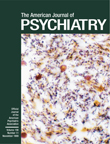Cybersuicide: The Internet and Suicide
To the Editor: We report on two suicide attempts in which information about the methods used were obtained from the Internet. Both cases illustrate the danger of having access to information by means of the Internet. Such information may prove detrimental to vulnerable psychiatric patients.
Mr. A, a 16-year-old African American adolescent, appeared at the emergency room after attempting suicide. He has no psychiatric history but had borderline mental retardation (IQ=80). He had ingested castor oil beans (from the plant Ricinus communis). After ingesting two beans, he confessed to his mother, who brought him to the emergency room. His suicidal ideas followed a worsening of his academic performance, which also led to his being subjected to ridicule by his peers. Mr. A’s education involved using the computer, and he had regular access to the Internet. He got the idea for suicide from Web sites, although he refused to disclose them. He subsequently made an uneventful recovery.
Ms. B, a 34-year-old woman with borderline personality disorder and posttraumatic stress disorder, had a history of several suicide attempts by wrist laceration and overdosing resulting in multiple hospitalizations. On this occasion, she attempted suicide by drinking several liters of water. She got the idea from the Internet, as a less painful and more convenient method of committing suicide. Ms. B did not divulge the Web site address but acknowledged that information about suicide is readily available on the Internet. She was hospitalized for observation and recovered without complications.
It is extremely easy to access information about suicide from the Internet. Using the search engines Looksmart and Yahoo, we identified several such sites. One site described using guns, overdosing, slashing one’s wrists, and hanging as the “best methods to commit suicide.” Other site titles suggested various suicide methods. One site illustrated various methods—lethal doses of poison, their availability, estimated time of death, and degrees of certainty. Another site, by its title, appeared to be about committing suicide; its content, however, was more about repentance.
The Internet is already having a significant influence in medicine and psychiatry. Although, it has a great potential in psychiatric education, clinical care, and research (1), its impact on social issues should not be underestimated. It has not escaped the attention of vulnerable individuals who have been sharing information about suicide. There are examples of interactive notes followed by a suicide fatality (2). Although information from the Internet may be useful for research, these two cases illustrate the potential hazard of its inappropriate use.
Mental health care providers should counsel patients about alternatives to surfing the Web at times of crisis. Help may be available by calling crisis lines, clinicians, friends, or family members.
1. Huang MP, Alessi NE: The Internet and the future of psychiatry. Am J Psychiatry 1996; 153:861–869Link, Google Scholar
2. Baume P, Cantor CH, Rolfe A: Cybersuicide: the role of interactive suicide notes on the Internet. Crisis 1997; 18:73–79Medline, Google Scholar



